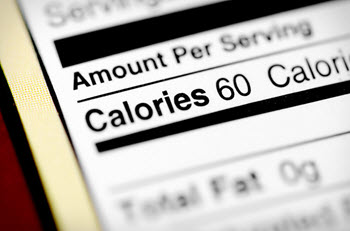DayMark Offers Some Advice on Reading Food Labels
Posted on 24th Aug 2017

Many of us find food labels to be confusing. Hopefully, this will be a thing of the past. Considerable progress has been made in recent years in food labeling to end food label confusion and the Food and Drug Administration (FDA) is expected to make changes to food labels in 2018, with one of their goals being to make them easier to read and understand.
But the food service industry is not necessarily waiting for the FDA. It’s taking its own steps. Grocery stores, convenience stores, and manufacturers of food labeling systems are also doing their part to help end confusion so consumers can make more informed food choices.
To better understand food labels and how important they are, let’s start at the beginning. Why do we have food labels?
“The primary purpose of a [food] label is to provide necessary and accurate nutritional information on [food] products,” according to Jae Kyeom Kim, an assistant professor at the University of Arkansas human nutrition program. “New labels are designed to provide nutrient facts that may influence consumer health issues. One example would be total calories on the label, which is something you want to monitor for weight control or diabetes.”
Aware of this, some manufacturers, working with their product labeling partners, are using larger type for the words “calories,” “servings per container,” “serving size,” etc. Listing these metrics on food labels is required by the FDA—but using larger type is designed to make it easier for consumers to locate this information quickly.
“’Total calories’ is the most read item on a food label. If consumers read anything, it’s the number of calories a product has.”
Here are some other terms on food product labels that often cause confusion:
Serving size. This metric is closely tied to the number of calories along with the number of nutrients in a product. Some product labels still provide serving size information that dates to 1993. Eating habits have changed a lot since then, and many of us consume larger (and in some cases, smaller) serving sizes of many food items than we did back in the 1990s.
Here’s what we need to know: pay attention to serving size, especially how many servings are in the food product, and then ask yourself, “how many servings do I regularly consume?” If the label indicates the package includes two servings, but you consume the entire thing, multiply all the calorie and related information by two.
Calories from fat. This one stumps just about everyone. As the term implies, it only refers to the number of calories in a food product that come from fat rather than carbohydrates or protein. The U.S. Institute of Medicine recommends that Americans consume about 20 to 35 percent of their total calories from fat. Calculate the percentage from fat in a single serving by dividing calories from fat by total calories per serving.
Percent of Daily Value (DV). This metric is both easy to understand and to confuse at the same time. Let’s say the food product label says an item has “15 percent of the protein you need every day.” But is that for a young, healthy adult? A senior citizen? A child? The percentages are all based on a 2,000-calorie diet consumed by a healthy adult.
According to the Mayo Clinic, if a nutrition metric is five percent or less it will have little impact on the DV necessary for a healthy adult. On the other hand, if it is 20 percent or more, that’s probably too high. You run the risk of having too much intake of a specific nutrient. If this nutrient is sodium, for example, that could lead to health problems.
Limit These/More of These. It would be nice if food labels just told us what nutrients we should eat more of and which we should consume less of. But since they do not, try and remember this: anything on the label that refers to fat, saturated fat, trans fat, sodium, or cholesterol, you want to keep those amounts and percentages as low as possible.
On the other hand, most Americans do not get enough dietary fiber, vitamins A, and C, calcium and iron. Keep your eye out for these and include them in your diet. These nutrients help keep us healthy and can reduce the risk of some diseases.
For more information on new technologies that make food labeling faster and more accurate, contact a DayMark representative at 1-866-517-0490 .


